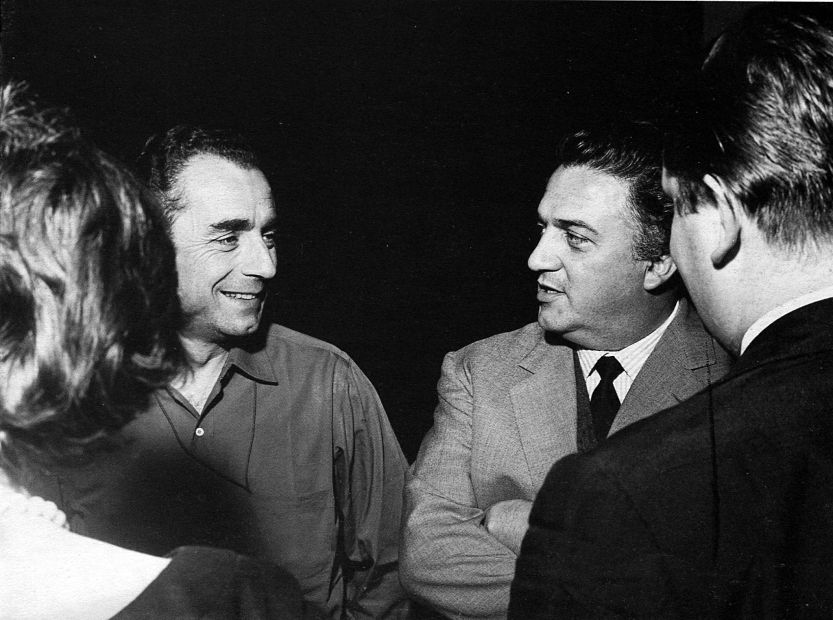Michelngelo Antonioni’s La Notte, Fellini’s La Dolce Vita
Written by Joe D on November 15th, 2013
I just got the Criterion Blu Ray release of La Notte, it is fantastic. If you are at all interested in this film, get it you won’t be disappointed. Such a visually stunning film, set in Milan in 1961, the center of the Italian Economic Boom, it contrasts the old and the new city in brilliant ways. In a way this is what the film is about, the characters in this changing landscape, this changing, evolving world, and what it does to them. An investigation into the function of human emotions in this rapidly changing theater, do they still make sense? Do they have to evolve as well? These characters, figures in a landscape, that are so cut off from everything. Three of the greatest Cinema actors of all time grace this production, Marcello Mastroianni, Jean Moreau, and the sublime Monica Vitti, Antonioni’s Muse.

Marcello and Moreau were unhappy with this film, probably because Marcello has never seemed so weak, so dissatisfied, so nothing. Moreau on the other hand is much more alive, curious, searching. Her intelligence and sensitivity are revealled in snatches of conversation, a monolouge, glances, gestures.
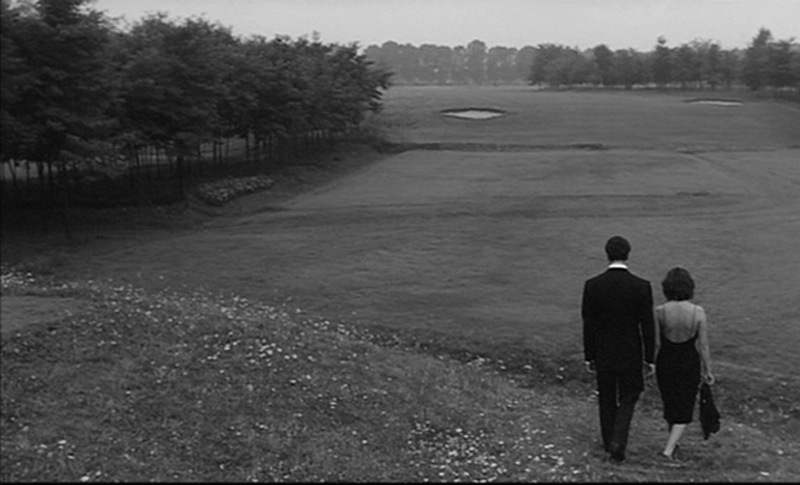
Antonioni celebrates the power and intelligence of women better than anyone else, especially considering the time and place this film was made, Italy,1961, a male dominated culture. His women are so much more interesting than his men, he saw the gifts and insights women have to offer and illuminated them so clearly. A sign of his maturity as an artist and human being. All this and more is expressed by the incredible camerawork of Gianni Di Venanzo. This guy has become my favorite cameraman of all time, such a genius,his framing is so unorthodox and powerful, his use of Black, amazing, people are always turning off lights and becoming inky silhouettes, or moving through darkness and light. Plus this film has many wonderful mysterious reflecting surfaces, sometimes you can’t tell what’s real, people become ghosts floating through Architecture. Bravo Gianni! A Poet of the Eye, the camera.

There is a little booklet that comes with the Criterion release, in it Antonioni speaks about the gestation of the film. He had the idea before L’Aventura and had begun working on it. He thought a less attractive woman would be good for the lead, so he went to see Giulietta Massina, wife of Federico Fellini and talk to her about the film. Fellini loved the idea and said it would make a fantastic film. But Antonioni didn’t make it at that time and changed his mind about the lead, using the compelling Jean Moreau.
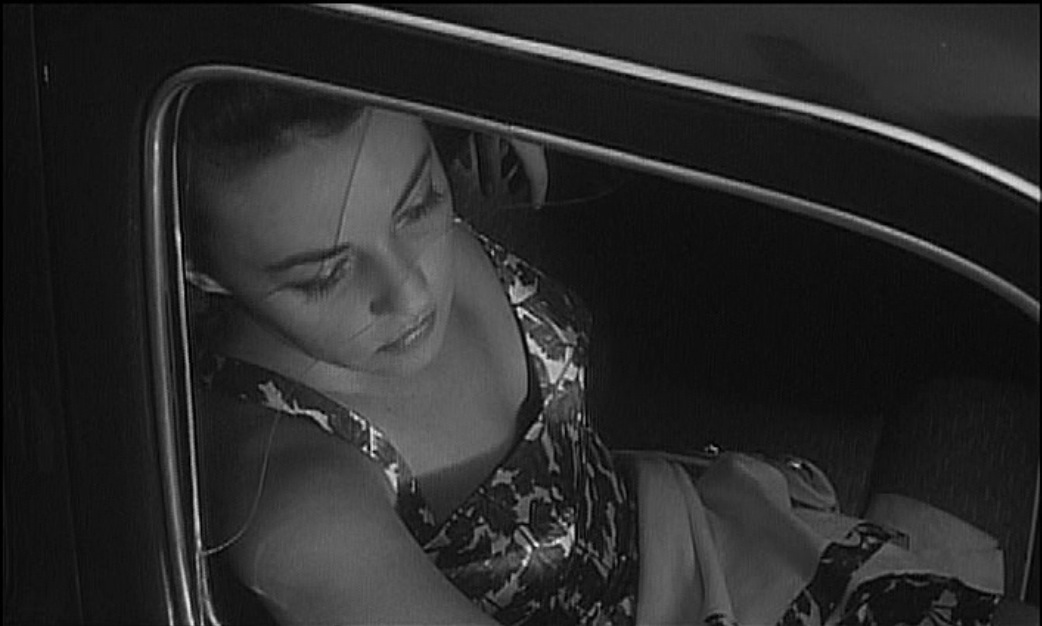
Fellini went on to make La Dolce Vita with Marcello Mastroianni, a film that shares many elements with La Notte. The male leads are both writers, alienated, losing their creative spark. Both films have important characters that are encouraging to the artistic sides of the writers, friends that wind up dead. Steiner in La Dolce Vita, Garani in La Notte.
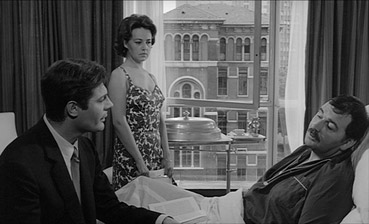
There are scenes in nightclubs featuring exotic dancers in both, fetishistic, sexualized performances by people of a different race. Monica Vitti is the bored beautiful daughter of a super rich businessman that firts with Marcello, Anouk Aimee plays that part in La Dolce Vita. Vitti has a reel to reel tape recorder she plays with, recording her spoken thoughts that she erases, Steiner has a reel to reel also that almost reveals his innermost thoughts. A working woman at a snack bar on the edge of town, in kind ofa run down area tells Moreau of a nearby hotel she can use for an assignation, Anouk takes Marcello to the run down apartment of a prostitute to have sex with him. They both have climactic scenes at a huge party on a big estate that wind up with decadent games. Both end at dawn after the party, even the cmaera movement through the trees in the final scenes is similar.
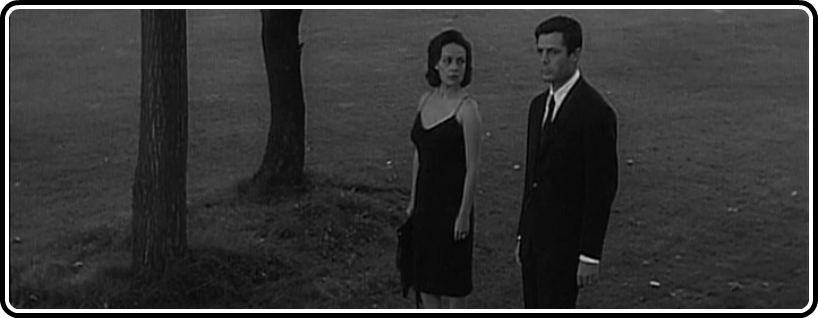
Ennio Flaiano was a screenwriter on both. La Dolce Vita was a huge hit, probably because of the controversy surrounding it, the Church banned it, people were forbidden to see it, a sure way to increase ticket sales. I don’t know how La Notte did at the box office, it is an uncommercial film but it is interesting to compare them, these two artists obviously inspired one another, I wonder what their relationship was like? In any case see La Notte. A vision of the future of Makind from 1961.
